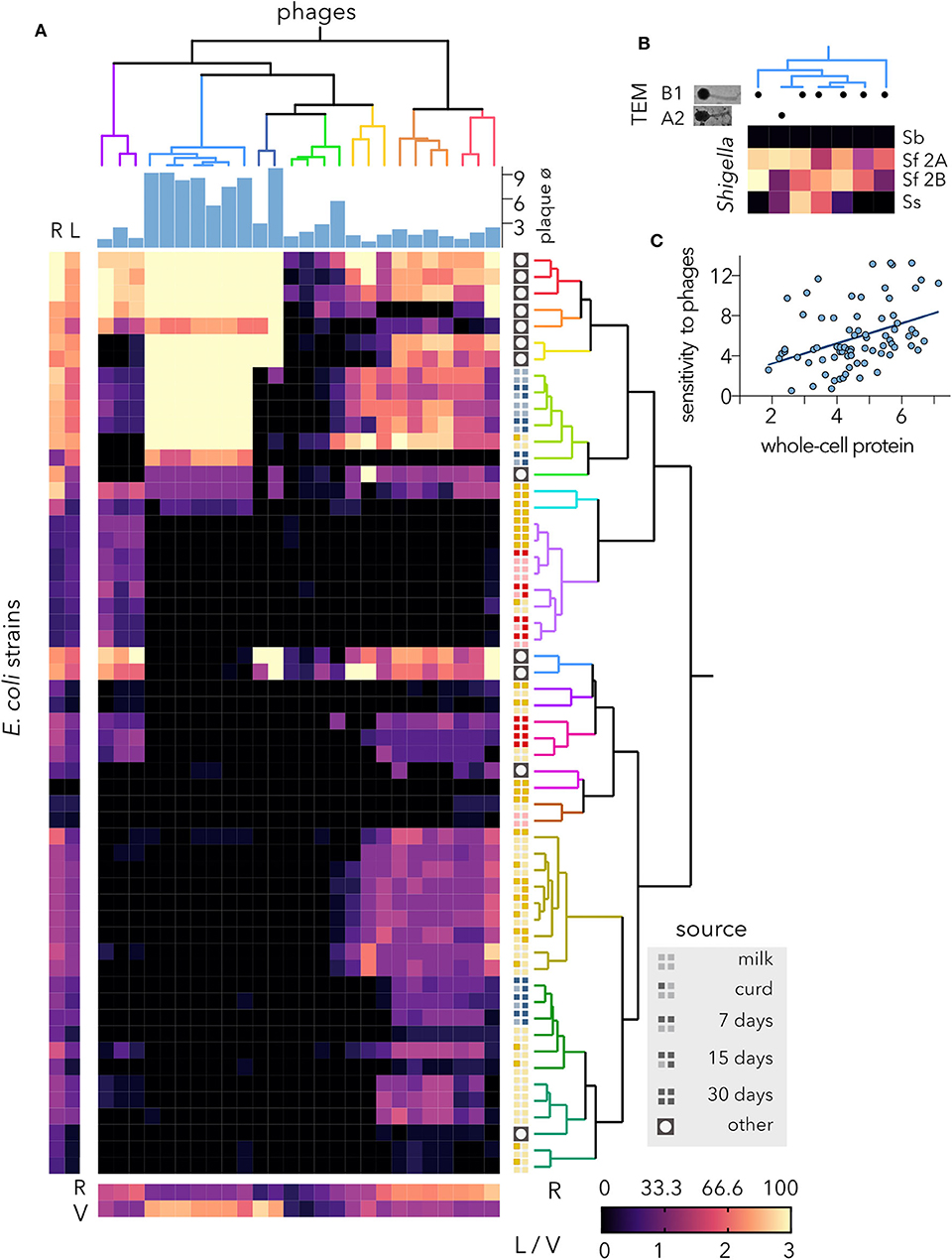
95% of researchers rate our articles as excellent or good
Learn more about the work of our research integrity team to safeguard the quality of each article we publish.
Find out more
CORRECTION article
Front. Microbiol. , 02 December 2020
Sec. Food Microbiology
Volume 11 - 2020 | https://doi.org/10.3389/fmicb.2020.623135
This article is part of the Research Topic Bacteriophages to Fight Food-Borne Pathogens/Phages Struggling for Food Safety View all 6 articles
This article is a correction to:
Diversity and Local Coadaptation of Escherichia coli and Coliphages From Small Ruminants
A Corrigendum on
Diversity and Local Coadaptation of Escherichia coli and Coliphages From Small Ruminants
by Molina, F., Simancas, A., Tabla, R., Gómez, A., Roa, I., and Rebollo, J. E. (2020). Front. Microbiol. 11:564522. doi: 10.3389/fmicb.2020.564522
In the original article, there was a mistake in Figure 3 as published. An outdated version of the figure was published instead of the final version. Thus, panel C was wrongly labeled as B and the actual panel B was missing. The corrected Figure 3 appears below.

Figure 3. Host range of virulent isolated phages. (A) The heatmap represents the lysis profiles of phages versus host E. coli strains. Phage infection is indicated after calculating the average clearing values of several experiments (6 > N > 2), where clearing varies between 1 and 3; 0 = no lysis. The average values for each strain are shown on the left (bacteria) and bottom (phages). The hierarchical classifications of Escherichia coli strains and coliphages were performed using Ward's method. The source of each bacterial strain is shown. The plaque diameter (mm) measured after infecting strain MG1655 is shown for each phage. R, % host range. The clearing is indicated as L (lysis) for the bacteria and V (virulence) for the phages. (B) Characterization of the coliphage cluster with the lowest infectivity variance. TEM, transmission electron microscopy; B1, Siphoviridae; A2, Myoviridae with elongated head. Lysis profiles of Shigella spp. strains. Sb, Shigella boydii; Sf 2A, Shigella flexneri 2A; Sf 2B, Shigella flexneri 2B; Ss, Shigella sonnei. (C) Correlation of SDS-PAGE and lysis profiles of cheese-isolated E. coli strains. Using the distance matrices, the correlation (r = 0.401) and statistical significance (p-value = 0.001) at an alpha of 0.05 were computed by performing a Mantel test.
The authors apologize for this error and state that this does not change the scientific conclusions of the article in any way. The original article has been updated.
Keywords: phage-host coadaptation, Escherichia coli, biocontrol, raw milk cheese, phage therapy, tradeoffs in life history, dairy, bacteriophages
Citation: Molina F, Simancas A, Tabla R, Gómez A, Roa I and Rebollo JE (2020) Corrigendum: Diversity and Local Coadaptation of Escherichia coli and Coliphages From Small Ruminants. Front. Microbiol. 11:623135. doi: 10.3389/fmicb.2020.623135
Received: 29 October 2020; Accepted: 11 November 2020;
Published: 02 December 2020.
Edited and reviewed by: Claudia Picozzi, University of Milan, Italy
Copyright © 2020 Molina, Simancas, Tabla, Gómez, Roa and Rebollo. This is an open-access article distributed under the terms of the Creative Commons Attribution License (CC BY). The use, distribution or reproduction in other forums is permitted, provided the original author(s) and the copyright owner(s) are credited and that the original publication in this journal is cited, in accordance with accepted academic practice. No use, distribution or reproduction is permitted which does not comply with these terms.
*Correspondence: Felipe Molina, Zm1vbGluYUB1bmV4LmVz
†These authors have contributed equally to this work
Disclaimer: All claims expressed in this article are solely those of the authors and do not necessarily represent those of their affiliated organizations, or those of the publisher, the editors and the reviewers. Any product that may be evaluated in this article or claim that may be made by its manufacturer is not guaranteed or endorsed by the publisher.
Research integrity at Frontiers

Learn more about the work of our research integrity team to safeguard the quality of each article we publish.